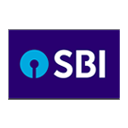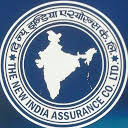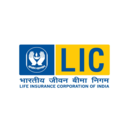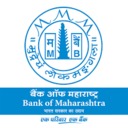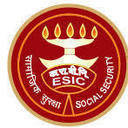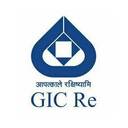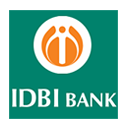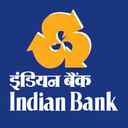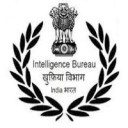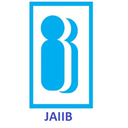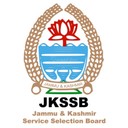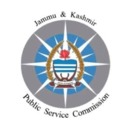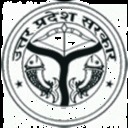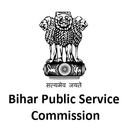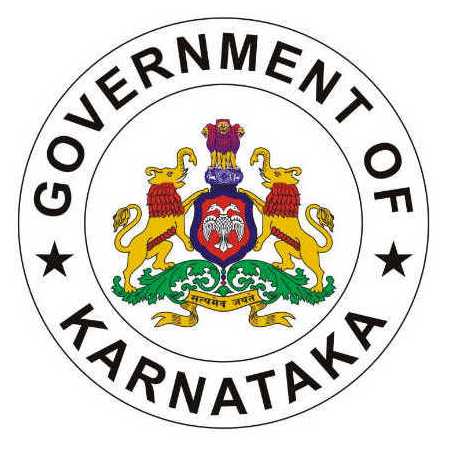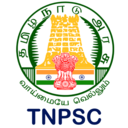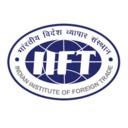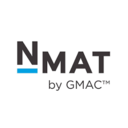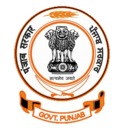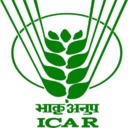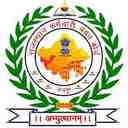The CAIIB syllabus 2025 is designed to enhance banking professionals' expertise in areas like Risk Management, Treasury, Credit, and Financial Management. It includes four compulsory papers: ABM, BFM, ABFM, and BRBL, along with one elective paper, such as Risk Management, IT & Digital Banking, or Central Banking. Get the latest CAIIB syllabus PDF download to access detailed topics, exam patterns, and marking schemes. Boost your banking career with expert preparation.
CAIIB Syllabus 2025 Overview
The CAIIB 2025 exam by IIBF enhances banking professionals' knowledge in Risk Management, Financial Analysis, and Banking Regulations. It consists of four compulsory papers and one elective paper, covering advanced banking concepts.
| Particulars | Details |
|---|
| Total Papers | 4 Compulsory + 1 Elective (Total: 5) |
| Mode of Exam | Online (Computer-Based Test) |
| Question Type | Multiple Choice Questions (MCQs) |
| Total Marks per Paper | 100 Marks |
| Exam Duration | 2 Hours per Paper |
| Negative Marking | No Negative Marking |
| Language | English & Hindi |
| Elective Subjects | Risk Management, Rural Banking, HRM, IT & Digital Banking, Central Banking |
Take a Free CAIIB Mock Test Now
CAIIB Syllabus 2025 in Detail
In CAIIB, no subject exemptions are granted based on prior qualifications. Electives are introduced to help candidates specialize in their areas of interest. It is recommended that candidates select an elective aligned with their current role or career goals to develop relevant banking skills. They also have the flexibility to change their electives in future attempts.
CAIIB Compulsory Papers Syllabus
Check out the complete syllabus of CAIIB Compulsory Papers below:
| Paper Name | Key Focus Areas |
|---|
| Advanced Bank Management (ABM) | Economic analysis, risk management, HR strategies, and credit risk assessment. |
| Bank Financial Management (BFM) | Treasury operations, foreign exchange management, asset-liability management, and international banking. |
| Advanced Business & Financial Management (ABFM) | Business strategy, corporate finance, governance, financial statement analysis, and decision-making. |
| Banking Regulations & Business Laws (BRBL) | Banking laws, regulatory frameworks, compliance, and business-related legal aspects. |
CAIIB Elective Papers (Choice Based) Syllabus
There are some elective papers as well for CAIIB. We have mentioned the detailed CAIIB Syllabus for elective papers below:
| Elective Paper | Topics Covered |
|---|
| Risk Management | Credit, market, and operational risk with mitigation strategies. |
| Rural Banking | Rural finance, microcredit, financial inclusion, and priority sector lending. |
| Human Resource Management (HRM) | Employee training, leadership, industrial relations, and HR policies. |
| IT & Digital Banking | Cybersecurity, fintech, digital payments, and banking technology. |
| Central Banking | Monetary policy, financial stability, economic regulations, and global banking systems. |
CAIIB Syllabus 2025 PDF Download
Download the CAIIB Syllabus 2025 PDF to get the latest exam structure, compulsory and elective subjects, and topic-wise details. This IIBF CAIIB syllabus covers Advanced Bank Management (ABM), Bank Financial Management (BFM), Advanced Business & Financial Management (ABFM), and Banking Regulations & Business Laws (BRBL), along with specialized electives like Risk Management, IT & Digital Banking, and Central Banking. Stay ahead in your CAIIB exam preparation with this comprehensive syllabus. Get the official CAIIB Syllabus PDF in the link given below.
Download CAIIB Syllabus 2025 PDF
CAIIB Exam Pattern
The CAIIB 2025 exam, conducted by IIBF, follows an online format and comprises of 100 marks per paper. Given below is the CAIIB Exam Pattern:
| Paper Name | Total Marks | Exam Duration | Passing Marks |
|---|
| Advanced Bank Management (ABM) | 100 | 2 Hours | 50 (or 45 with 50% aggregate) |
| Bank Financial Management (BFM) | 100 | 2 Hours | 50 (or 45 with 50% aggregate) |
| Advanced Business & Financial Management (ABFM) | 100 | 2 Hours | 50 (or 45 with 50% aggregate) |
| Banking Regulations & Business Laws (BRBL) | 100 | 2 Hours | 50 (or 45 with 50% aggregate) |
| Elective Paper (Any One) | 100 | 2 Hours | 50 (or 45 with 50% aggregate) |
Key Highlights of the CAIIB Exam Pattern:
Below are the key highlights, check them out.
- Total Papers: 5 (4 Compulsory + 1 Elective)
- Total Marks: 500 (100 per paper)
- Exam Mode: Online (Computer-Based)
- Question Type: MCQs (Multiple Choice Questions)
- Negative Marking: No Negative Marking
- Passing Criteria: Minimum 50 per paper or 45 per paper with 50% aggregate
The CAIIB 2025 exam pattern ensures a comprehensive assessment of banking professionals, focusing on financial expertise, risk management, and regulatory compliance for career advancement.
CAIIB Exam Compulsory Subjects Syllabus 2025
The Certified Associate of Indian Institute of Bankers (CAIIB) 2025 examination, administered by the Indian Institute of Banking & Finance (IIBF), encompasses four compulsory subjects. Below is a detailed breakdown of each subject's syllabus:
1. Advanced Bank Management (ABM)
The various modules of Advanced Bank Management are given below:
Module A: Economic Analysis
- National Income and Related Concepts
- Inflation: Definition, Types, and Control Measures
- Business Cycles: Phases and Indicators
- Monetary and Fiscal Policies: Tools and Impacts
- International Trade: Theories, Policies, and Balance of Payments
Module B: Business Mathematics
- Time Value of Money: Present and Future Value Calculations
- Sampling Methods and Estimation
- Linear Programming: Formulation and Solutions
- Simulation: Concepts and Applications
Module C: Human Resource Management
- Manpower Planning: Strategies and Techniques
- Recruitment and Selection Processes
- Training and Development: Needs and Methods
- Performance Appraisal Systems
- Compensation Management: Structures and Policies
Module D: Credit Management
- Credit Policy: Objectives and Formulation
- Credit Appraisal: Techniques and Tools
- Monitoring and Review of Credit Facilities
- Management of Non-Performing Assets (NPAs)
2. Bank Financial Management (BFM)
Check out the different modules of Bank Financial Management below:
Module A: International Banking
- International Monetary System: Evolution and Structure
- Foreign Exchange Markets: Functions and Participants
- Exchange Rate Mechanisms and Risk Management
- International Trade Finance: Instruments and Procedures
Module B: Risk Management
- Risk Identification in Banking Operations
- Credit Risk: Assessment and Mitigation
- Market Risk: Measurement and Management
- Operational Risk: Frameworks and Controls
Module C: Treasury Management
- Functions and Organization of Treasury
- Liquidity Management: Strategies and Tools
- Investment Portfolio Management
- Derivatives in Treasury Operations
Module D: Balance Sheet Management
- Asset-Liability Management (ALM): Concepts and Techniques
- Interest Rate Risk Management
- Liquidity Risk: Measurement and Control
- Capital Adequacy: Basel Norms and Implementation
3. Advanced Business & Financial Management (ABFM)
Given below are the details of each module for Advanced Business and Financial Management:
Module A: Business Strategy
- Strategic Planning: Process and Models
- Corporate Strategies: Growth, Stability, and Retrenchment
- Competitive Analysis: Tools and Techniques
- Strategic Implementation and Control
Module B: Leadership and Ethics
- Leadership Theories and Styles
- Corporate Governance: Principles and Practices
- Business Ethics: Frameworks and Applications
- Corporate Social Responsibility (CSR): Concepts and Cases
Module C: Financial Management
- Capital Structure: Planning and Policy
- Cost of Capital: Computation and Implications
- Dividend Decisions: Theories and Policies
- Working Capital Management: Components and Strategies
Module D: Valuation and Mergers
- Business Valuation Methods
- Mergers and Acquisitions: Process and Financing
- Corporate Restructuring: Strategies and Techniques
- Financial Distress and Restructuring
4. Banking Regulations and Business Laws (BRBL)
Candidates must know the details of each module from the information given below:
Module A: Regulations and Compliance
- Overview of Banking Regulation Act, 1949
- Reserve Bank of India Act, 1934: Provisions and Functions
- Compliance Framework in Banks
- Anti-Money Laundering (AML) and Know Your Customer (KYC) Guidelines
Module B: Important Acts
- Negotiable Instruments Act, 1881
- Indian Contract Act, 1872
- Companies Act, 2013: Provisions Related to Banking
- Securitization and Reconstruction of Financial Assets and Enforcement of Security Interest (SARFAESI) Act, 2002
Module C: Commercial Laws
- Transfer of Property Act, 1882
- Sale of Goods Act, 1930
- Indian Partnership Act, 1932
- Limited Liability Partnership (LLP) Act, 2008
Module D: Business Laws and Regulations for Banking
- Consumer Protection Act
- Competition Act
- Intellectual Property Rights (IPR) related to Banking
- Right to Information Act (RTI)
Attempt CAIIB Previous Year Papers
Elective Papers in CAIIB Syllabus
The Certified Associate of Indian Institute of Bankers (CAIIB) 2025 examination, administered by the Indian Institute of Banking & Finance (IIBF), includes four compulsory papers and one elective paper. The details are given below:
| Subject | Module | Topics Covered |
|---|
| Rural Banking | Module A: Rural India – An Overview | Characteristics of the rural population and economy, Poverty alleviation programs, and rural development initiatives |
| Module B: Financing Rural Development | Role of credit in rural development, Microfinance, and self-help groups |
| Module C: Priority Sector Financing and Government Initiatives | Priority sector lending norms, Government-sponsored schemes for rural development |
| Module D: Problems and Prospects in Rural Banking | Challenges faced by rural banks, Technological innovations in rural banking |
| Human Resource Management | Module A: Human Resource Management | Fundamentals of HRM, Recruitment, and selection processes |
| Module B: Building an HR Strategy | Strategic HR planning, Aligning HR strategy with organizational goals |
| Module C: Motivation, Training, and Skill Development | Employee motivation theories, Training needs assessment and methods |
| Module D: Personnel Management and Industrial Relations | Labor laws and regulations, Managing industrial disputes |
| Information Technology and Digital Banking | Module A: Introduction to Information Technology | Basics of IT in banking, IT infrastructure and security |
| Module B: Systems and Design | System development life cycle, Database management systems |
| Module C: Applications in Banking | Core banking solutions, Electronic payment systems |
| Module D: Security, Controls, and Guidelines | Cybersecurity measures, Regulatory guidelines on IT usage |
| Risk Management | Module A: Overview of Risk Management | Types of risks in banking, Risk management frameworks |
| Module B: Credit Risk Management | Credit appraisal and rating, Mitigation techniques |
| Module C: Operational Risk Management | Identifying operational risks, Risk control mechanisms |
| Module D: Market Risk Management | Interest rate and liquidity risks, Hedging strategies |
| Central Banking | Module A: Rationale and Functions of Central Bank | Role of central banks in the economy, Monetary policy formulation |
| Module B: Central Banking in India | Evolution and functions of the Reserve Bank of India, Regulatory and supervisory roles |
| Module C: Monetary Policy and Financial Stability | Instruments of monetary policy, Ensuring financial stability |
| Module D: Contemporary Issues in Central Banking | Challenges in central banking, Global financial crises and responses |
Tips to Prepare for CAIIB Syllabus
Preparing for the CAIIB 2025 exam requires a strategic approach, as the syllabus covers advanced banking and financial concepts. Here are some expert tips to help you ace the exam:
1. Understand the Exam Pattern & Syllabus
- Go through the latest syllabus and exam structure provided by IIBF.
- Focus on both compulsory and elective papers, as they require different preparation strategies.
2. Prioritize Conceptual Clarity
- CAIIB tests practical application of banking concepts.
- Strengthen your knowledge of Risk Management, Treasury, International Banking, and Financial Management.
3. Use Standard Study Material
- Refer to IIBF-prescribed books and study modules.
- Use case studies to understand real-world banking applications.
4. Focus on Numerical & Case-Based Questions
- Practice numericals in Advanced Bank Management (ABM) & Bank Financial Management (BFM).
- Solve previous years' case-based questions to improve analytical skills.
5. Make Use of Online Courses & Mock Tests
- Enroll in CAIIB online coaching for guided preparation.
- Attempt mock tests & previous papers to assess your performance.
6. Revise & Practice Regularly
- Create short notes for quick revision before the exam.
- Focus on important formulas and regulatory updates.
7. Stay Updated with Banking & Financial News
- Read RBI updates, financial newspapers, and recent banking reforms.
- Follow IIBF and RBI circulars to stay updated on policy changes.
CAIIB Marking Scheme
The Certified Associate of Indian Institute of Bankers (CAIIB) exam follows a structured marking scheme as per IIBF guidelines. Below is the detailed breakdown:
| Criteria | Details |
|---|
| Total Papers | 5 (4 compulsory + 1 elective) |
| Total Marks per Paper | 100 Marks |
| Number of Questions | 100 (Objective Type) |
| Marking System | 1 mark per correct answer |
| Negative Marking | No negative marking |
| Exam Duration | 2 Hours (120 Minutes) per paper |
Explore CAIIB Courses



